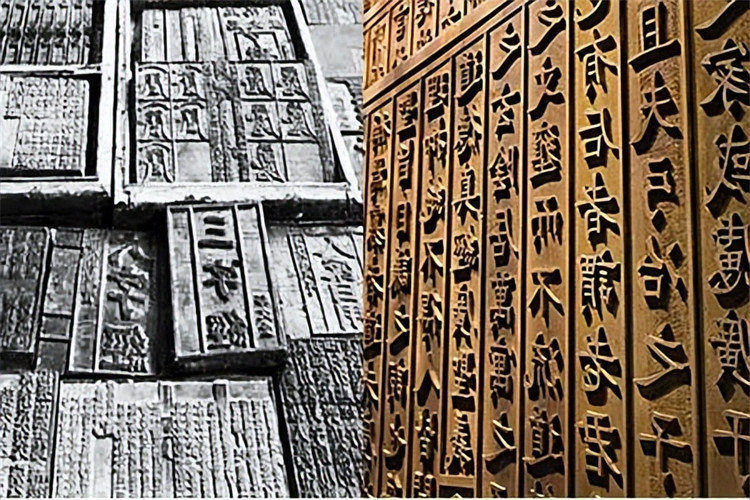In the 10th century, an invention changed the world: the Chinese printing press. This revolutionary machine allowed for books to be printed quickly and cheaply. Leading to a massive increase in literacy across China and beyond. But the effects of this invention were far-reaching, going beyond just printing books. From its initial development to its continued use today in bookbinding and paper making. The Chinese printing press has had a profound impact on cultures around the globe.
In this article, we will explore how these developments came about, what types of books and documents it were used for, and its effects on our modern world.
Advancements and developments of the Chinese printing press

The Chinese printing press revolutionized the way books were made and distributed. Leading to a massive increase in literacy across China and beyond. The invention of this incredible machine is attributed to Bi Sheng during the Song Dynasty in the 10th century. Who developed a clay type system that was more resilient than traditional woodblock printing methods. This allowed books to be mass-produced quickly and cheaply. That greatly increasing their reach and availability.
Soon after its invention, the Chinese printing press was adopted by other countries and cultures. Furthering its influence around the world. It was used for a variety of purposes including printing documents. Such as official decrees, religious texts, educational materials and even newspapers. By making these documents readily available to people outside of privileged circles. It allowed for greater access to information and knowledge than ever before.
Today, the Chinese printing press is still used in bookbinding and paper making processes. Due to its durability and efficiency. It's also seen in modern day culture as many artisans use it for personalized prints or artwork they can sell online or at markets. Its legacy lives on through these uses. As well as through its past contributions to education and information accessibility. Both of which are essential components of any successful society.
Types of books and documents printed by the Chinese printing press

The Chinese printing press was a revolutionary invention. It had far-reaching effects on the spread of knowledge in China and beyond. This incredible machine allowed for the mass production of documents, books, religious texts, and other printed materials at an unprecedented rate. It revolutionized book publishing by enabling the mass production of printed materials. While also changing how information could be disseminated throughout the country.
One of its most significant uses was to produce Buddhist scriptures and ancient texts for religious use. Before this invention, reproductions of original works were difficult to distribute on a large scale. Due to traditional methods, such as hand copying being too slow and tedious. However, with this new technology, these important works became available in multiple formats easily accessed by more people than ever before.
The China print press was also used extensively by the government to create official documents. Such as mapsŌĆōas well as process taxes during the Ming Dynasty (1368-1644). This ability to quickly reproduce materials made it much easier for governments to keep records up-to-date. While cutting down administrative costs at the same time.
Merchants and traders also found great value in this invention. Using it to advertise their goods or services through printed leaflets or pamphlets. Proving incredibly effective in helping businesses reach out to potential customers. Also boost profits significantly over time.
Overall, there is no doubt that the Chinese printing press had a huge impact on transforming book production and distribution throughout China and beyond. Even shaping modern day China today!
Impact of the Chinese printing press on today's world

The Chinese printing press has had an immense impact on the world today. From its introduction over a millennium ago to its current use in bookbinding and paper making. This revolutionary technology enabled scholars and students to quickly and accurately produce mass amounts of documents, books, religious texts and other printed materials. With this new form of communication came an increased rate of literacy. That opened up doors for businesses to promote their products or services. While also reducing costs associated with producing documents.
Today, the influence of this invaluable invention is still being felt across global culture as it continues to shape modern day China. The development of this technology has come a long way since its inception centuries ago. But its legacy persists through its past contributions to education and information accessibility. It has paved the way for digital media which are now widely used around the world. Bringing ancient wisdom and knowledge into our lives that may otherwise have been lost without it.
In Summary
The Chinese printing press is a cornerstone of modern society. Allowing the mass production and dissemination of knowledge throughout the world. This remarkable invention transformed education, business and communication for centuries.
By creating books, documents, newspapers and other printed materials quickly (like china booklet printing) and accurately with minimal effort. It made information widely available. In addition to impacting literacy rates across China and beyond. It also served as a precursor to digital media by laying the groundwork for future advances in printing technology.
Without this incredible machine, our world would look drastically different today. Literacy rates may be much lower than they are now. Businesses may not have had the same opportunities to succeed or spread information so easily around the globe. The impact of this technological advancement has been far-reaching. Not only did it help develop societies over time, but its legacy still continues right up to this day.